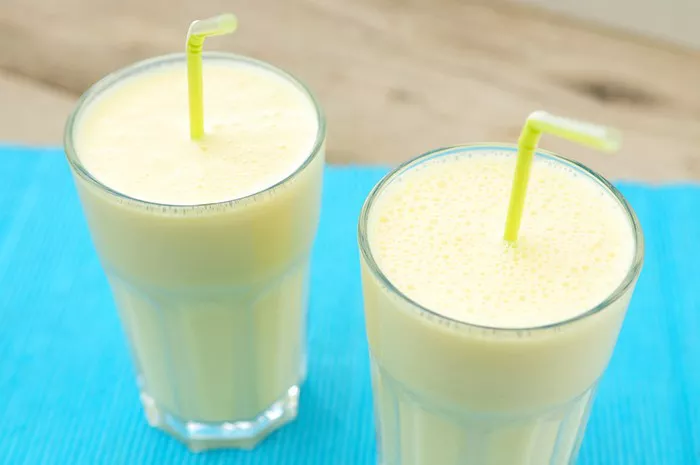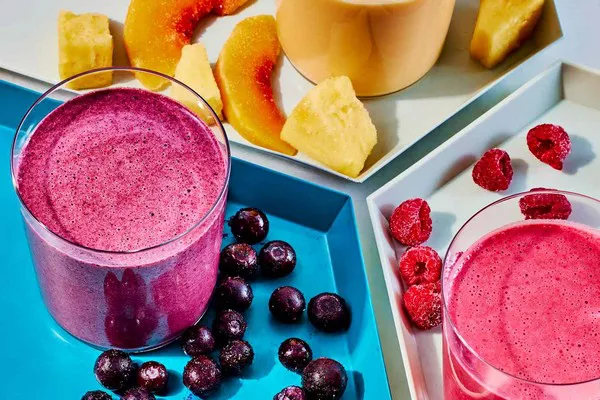When winter chill sets in or a cozy afternoon calls for a comforting beverage, many of us reach for a steaming cup of hot cocoa or hot chocolate. While these drinks often evoke similar warm and fuzzy feelings, there are distinct differences between hot cocoa and hot chocolate. To fully appreciate the nuances of each, let’s dive into the ingredients, preparation, taste, texture, and cultural significance of these beloved beverages.
Ingredients: The Base of the Beverage
Hot Cocoa
Hot cocoa typically starts with cocoa powder, which is derived from roasted and ground cacao beans. This powder is rich in cocoa solids but contains no cocoa butter, the fatty component of cacao beans that gives chocolate its smooth, creamy texture. Because cocoa powder lacks cocoa butter, it often requires additional ingredients to enhance its drinkability.
Cocoa Powder: The star ingredient, providing rich chocolate flavor.
Sugar: Added to balance the bitterness of cocoa powder.
Milk or Water: Acts as the liquid base.
Whipped Cream or Marshmallows: Optional toppings for added creaminess and sweetness.
Some recipes may also call for a pinch of salt to highlight the sweetness and add complexity to the flavor profile.
Hot Chocolate
Hot chocolate, on the other hand, often incorporates melted chocolate, cocoa butter, and cocoa solids into its formulation. This can be in the form of chocolate bars, chocolate chips, or pre-made hot chocolate mixes. The key difference lies in the inclusion of cocoa butter, which provides a smoother, richer, and more indulgent texture.
Chocolate: Typically high-quality chocolate bars or specialized hot chocolate mixes.
Milk: Whole milk, heavy cream, or even plant-based milk alternatives like oat milk or almond milk are common.
Sugar: Often already present in the chocolate, but additional sugar can be added to taste.
Whipped Cream, Chocolate Shavings, or Cinnamon: Optional garnishes to elevate the experience.
The inclusion of cocoa butter in hot chocolate makes it more decadent and gives it a silky, melt-in-your-mouth quality.
Preparation: The Art of Making the Perfect Drink
Hot Cocoa
Making hot cocoa involves a few straightforward steps:
Combine Cocoa Powder and Sugar: Start by mixing cocoa powder and sugar in a bowl or mug. This ensures an even distribution of sweetness and chocolate flavor.
Add a Little Liquid: Gradually add a small amount of milk or water to create a paste, which helps prevent clumping.
Heat the Remaining Liquid: In a saucepan or microwave, heat the remaining milk or water until warm but not boiling.
Combine Ingredients: Pour the warm liquid into the cocoa-sugar mixture, stirring until smooth.
Toppings: Add whipped cream, marshmallows, or a dusting of cinnamon for added texture and flavor.
This method ensures a rich, chocolatey drink with a slightly thinner consistency compared to hot chocolate.
Hot Chocolate
Preparing hot chocolate can be a bit more involved, especially if you’re using high-quality chocolate bars:
Chop Chocolate: Break the chocolate into small pieces to facilitate melting.
Heat Milk: Pour milk into a saucepan and heat until it’s steaming but not boiling. Avoid scorching the milk.
Melt Chocolate: Gradually add the chocolate pieces to the hot milk, stirring constantly until the chocolate is fully melted and the mixture is smooth.
Adjust Sweetness: Taste and add sugar if needed.
Serve: Pour into mugs and garnish with whipped cream, chocolate shavings, or a sprinkle of cinnamon.
Using a whisk or immersion blender can help achieve a frothy, barista-quality texture.
Taste: The Sensory Experience
Hot Cocoa
Hot cocoa is characterized by its robust, slightly bitter chocolate flavor derived from cocoa powder. The bitterness is tempered by sugar, resulting in a balanced, comforting taste. Because cocoa powder lacks cocoa butter, hot cocoa tends to have a lighter mouthfeel and can sometimes have a granular texture if not mixed properly.
The addition of milk or water provides a creamy base, but it’s generally not as rich as hot chocolate. Hot cocoa lovers appreciate its straightforward, nostalgic taste that evokes childhood memories of cozy winter afternoons.
Hot Chocolate
Hot chocolate, on the other hand, offers a more indulgent, luxurious taste experience. The inclusion of cocoa butter adds a silky, velvety texture that makes each sip feel like a treat. High-quality chocolate brings layers of flavor, from notes of caramel and vanilla to subtle hints of fruit and nuts.
The milk base amplifies the chocolate’s creaminess, creating a satisfyingly rich and decadent drink. Hot chocolate is often described as smoother, deeper, and more complex than hot cocoa, making it a favorite among chocolate enthusiasts.
Texture: The Feel of the Drink
Hot Cocoa
The texture of hot cocoa can vary depending on how well it’s mixed and the ingredients used. With cocoa powder as its foundation, hot cocoa tends to have a lighter, more watery consistency unless thickened with additional ingredients like cornstarch or cocoa butter substitutes.
Some people prefer a thicker hot cocoa, akin to a chocolate milkshake, while others enjoy a thinner, more drinkable version. Stirring thoroughly is crucial to avoid any gritty texture from undissolved cocoa powder.
Hot Chocolate
Hot chocolate’s texture is often described as velvety, silky, or creamy. The presence of cocoa butter and high-quality chocolate creates a smooth, luxurious mouthfeel that sets it apart from hot cocoa. The milk base adds to its richness, making it feel indulgent and satisfying.
Some recipes call for frothing the milk, which adds an airy, foamy texture that enhances the drink’s appeal. Whether you prefer a thick, rich hot chocolate or a lighter, frothy version, the texture is a defining feature of this beverage.
Cultural Significance: Beyond the Beverage
Hot Cocoa
Hot cocoa holds a special place in many cultures, often associated with warmth, comfort, and nostalgia. It’s a staple at holiday gatherings, school fairs, and family gatherings. Its simplicity and accessibility make it a beloved drink across generations.
In the United States, hot cocoa is a cherished winter tradition, often enjoyed with marshmallows or whipped cream. It’s a drink that evokes memories of childhood and the simple joys of life.
Hot Chocolate
Hot chocolate has a rich cultural history, varying significantly across regions. In Spain, thick, rich hot chocolate is often served with churros for breakfast. In Switzerland, hot chocolate is a sophisticated afternoon treat, enjoyed in elegant cafes. In Mexico, hot chocolate is spiced with cinnamon and chili peppers, reflecting the country’s unique flavor profile.
Hot chocolate is also deeply intertwined with luxury and indulgence. In many cultures, it’s a special-occasion drink, reserved for times of celebration or relaxation. Its association with high-quality ingredients and meticulous preparation makes it a symbol of indulgence and self-care.
Health Benefits: The Nutritional Aspect
Hot Cocoa
Hot cocoa, made with cocoa powder, offers some health benefits. Cocoa powder is rich in antioxidants, particularly flavonoids, which have been linked to heart health, reduced inflammation, and improved brain function. Dark cocoa powder, with a higher percentage of cocoa solids, tends to have more antioxidants.
However, it’s important to keep in mind that hot cocoa can be high in sugar and calories, especially if made with sweetened cocoa powder or topped with sugary additives. Moderation is key to enjoying its benefits without overdoing it on sugar.
Hot Chocolate
Hot chocolate, especially when made with high-quality chocolate, can also offer health benefits. Dark chocolate, which is higher in cocoa solids and lower in sugar, is particularly rich in antioxidants and flavonoids. These compounds have been shown to support heart health, lower blood pressure, and improve insulin sensitivity.
Milk-based hot chocolate provides additional nutrients like calcium and vitamin D, which are important for bone health. However, like hot cocoa, it’s essential to watch the sugar content and enjoy hot chocolate in moderation to avoid excessive calorie intake.
Conclusion
In conclusion, while hot cocoa and hot chocolate might seem interchangeable, they are distinct beverages with unique characteristics. Hot cocoa, made with cocoa powder, offers a robust, slightly bitter chocolate flavor and a lighter texture. It’s a nostalgic, comforting drink associated with simplicity and accessibility.
Hot chocolate, on the other hand, incorporates melted chocolate and cocoa butter, creating a smoother, richer, and more indulgent experience. Its cultural significance varies widely, reflecting the diverse traditions and tastes of different regions.
Whether you prefer the straightforward charm of hot cocoa or the luxurious indulgence of hot chocolate, both drinks have their place in the winter warmth hierarchy. So, the next time you’re in need of a cozy beverage, consider your preferences and choose the drink that best suits your mood. Embrace the differences and enjoy the unique flavors and textures that each beverage brings to your table.
Related Topics:


























